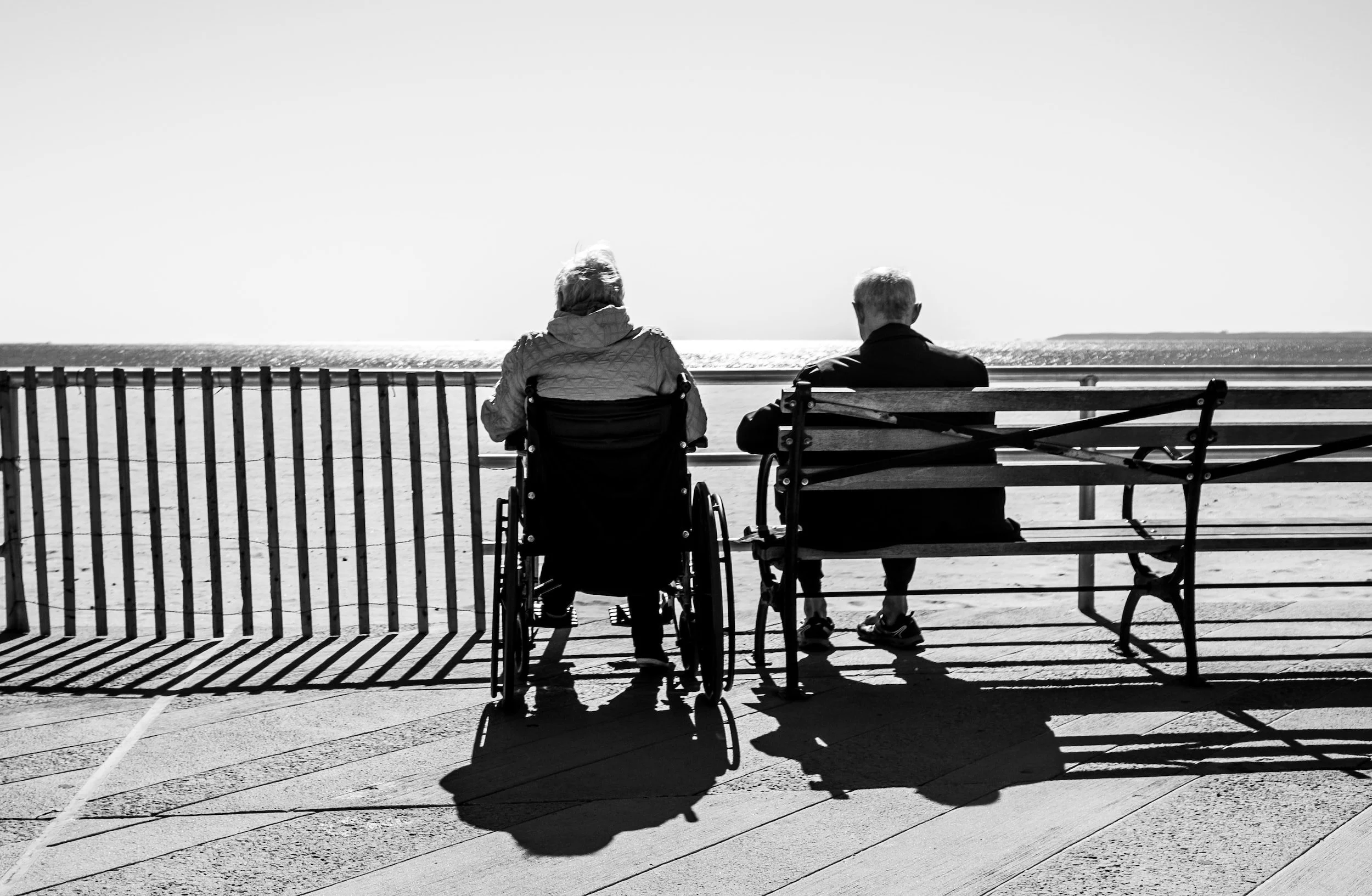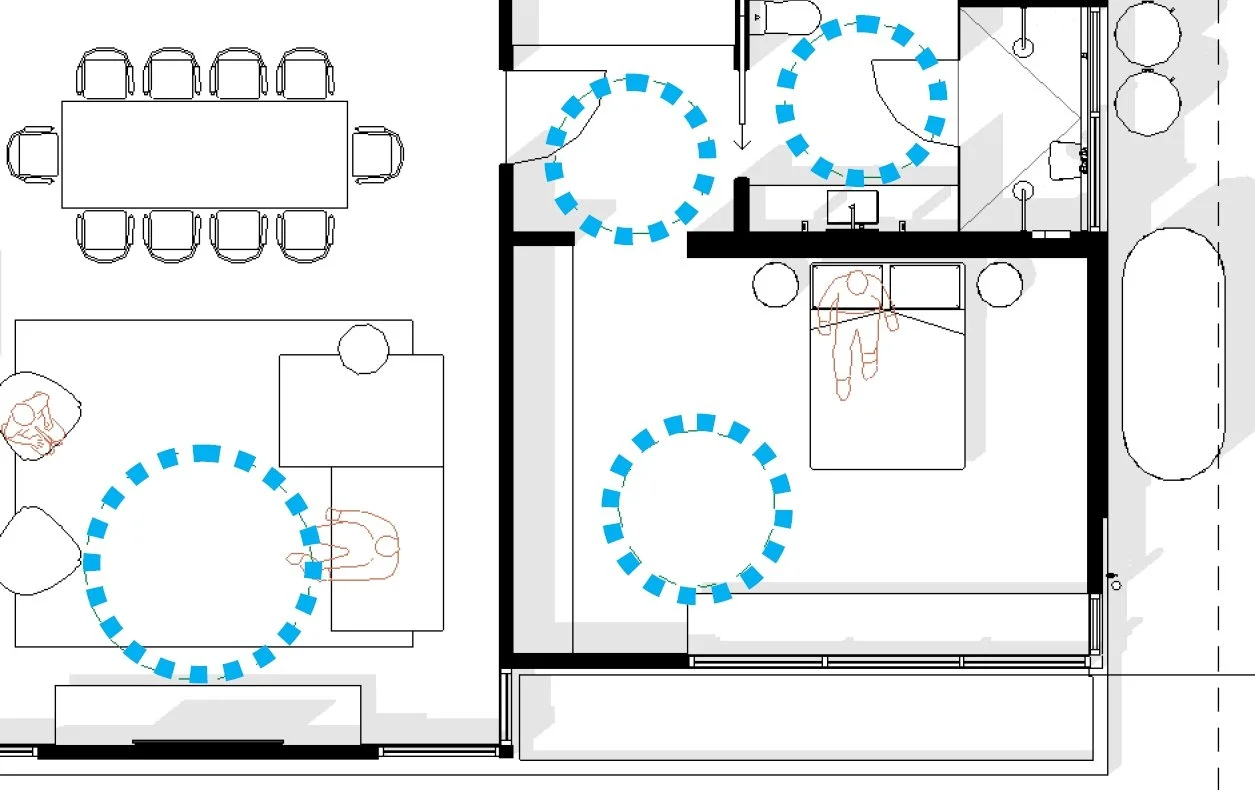Designing for Accessibility and Aging in Place
Did you know?
It costs on average 22% more to retrofit a home for accessibility than it would be to design for it upfront. When building a home, it's a great idea to consider the whole life of the building. Situations change - prams, crutches, wheelchairs, walking frames could all be needed by your family or the next. Let's build in as much accessibility as we can where we can.
The following quotes in this post are supplied by Serena Ovens, chief executive of the Physical Disability Council of NSW for a Guardian Australia article. A link to the article is at the bottom of this page.
“Parents with prams, those with injuries and older people – more than 50% of the population will benefit from liveable design inclusion in new home builds.”
Elderly people and toddlers tend not to lift their feet as high when they walk. It’s important to ensure pavements and doorways don’t create trip hazards.
“Accessible design” doesn’t need to look like a hospital. In fact, utilising Universal Design Principles can help keep people independent, mobile, and living at home.
Accessibility in Design
It’s easy to think of accessibility in design as an issue that affects only people with a permanent physical disability. Before we deep dive into specific disabilities, it seems prudent to take a moment to highlight all of the amazing ways that basic accessibility in design can be helpful to the vast majority of Australians.
Step-free entrance doors are not only great for improving wheelchair access but also - prams, anybody who can’t lift their feet consistently high, grocery cart/trolleys, and people on crutches.
Internal door and corridor widths make turning in a wheelchair easier but they also make turning with a mattress or couch much easier too.
Hobless showers are showers you don’t need to step over anything to enter and are great for reducing tripping. (Side note: They’re also easier to push a reluctant muddy dog into!)
Deep breakfast bars
Accessible design in architecture is a concept that aims to make buildings, homes, and other spaces accessible to people with disabilities. This includes designing spaces that are easy to navigate and use for people with mobility issues, as well as those with hearing or visual impairments.
Accessibility Benefits for All
But the benefits of accessible design extend far beyond just those with disabilities. Every family can benefit from accessible design in their home or community spaces. Here are a few examples:
Aging in place: As we age, it can become more difficult to navigate stairs, reach high shelves, or use certain appliances. Accessible design can help seniors stay in their homes longer and maintain their independence.
Multigenerational households: With more and more families living with multiple generations under one roof, accessible design can make it easier for everyone to coexist and access shared spaces.
Children: Children are constantly growing and developing, and accessible design can make it easier for them to play and learn in their own home. This can be especially important for children with disabilities who may have additional mobility or sensory needs.
Visitors: Whether it's a family member with a temporary injury or a friend with a permanent disability, accessible design can make it easier for all visitors to feel welcome and included in your home.
Overall, accessible design benefits everyone by creating spaces that are functional and inclusive for all members of the family, regardless of age or ability. By considering accessibility in your home design, you can create a space that is comfortable and welcoming for everyone.
“We see cases in which people have spent decades moving from house to house without being able to find anything appropriate to their needs – where they can’t even do things like regularly wash themselves because the bathrooms aren’t accessible.”
Excerpt from the Liveable housing Design Guidelines
“All people with physical disability at one point or another have had to manage in a home that is patently unsuitable, even potentially dangerous, for them to be in.”
Accessible Housing for Investors
Investing in accessible design in architecture has numerous benefits for investors. For one, it increases the appeal of the building to a wider range of potential tenants or buyers. This is because accessible design ensures that the building is able to accommodate the needs of individuals with disabilities, making it more attractive to those who may have previously been unable to use the building.
Additionally, investing in accessible design can also lead to increased property value. Buildings that are designed with accessibility in mind are often more functional and efficient, which can lead to higher demand and therefore higher prices.
Furthermore, investing in accessible design can also help to improve the reputation of the building. As society becomes increasingly aware of the importance of accessibility, buildings that prioritize it are likely to be viewed more favorably by potential tenants and buyers.
Overall, investing in accessible design in architecture is a wise decision for investors as it can lead to increased appeal, property value, and reputation. It is a win-win for both the investor and the end users of the building.
There are a number of reasons why it is important for families and investors to improve the accessibility of building stock of our cities and towns.
First, improving accessibility can help improve the quality of life for people with disabilities, older adults, and families with young children.
Second, improving accessibility can help businesses and investors by making it easier for people to get to and from their destinations.
Finally, improving accessibility can help reduce the cost of doing business by making it easier for people to move around our cities and towns.
The NDIS Specialist Disability Accomodation scheme has been successful in attracting private investors because it offers a stable and predictable investment return, as well as the potential for capital growth. Additionally, SDAs offer investors the opportunity to support a social cause, which is a key consideration for many private investors.
What are the standards?
The guiding principles of most accessibility standards across the world are the Universal Design Principles.
UNIVERSAL DESIGN PRINCIPLES
The principles of universal design can be interpreted in a variety of ways. However, some key principles of universal design that could be applied in architecture include:
Equitable use. The design is useful and marketable to people with diverse abilities. A website that is designed so that it is accessible to everyone, including people who are blind, employs this principle.
Flexibility in use. The design accommodates a wide range of individual preferences and abilities. A museum that allows a visitor to choose to read or listen to a description of the contents of a display case employs this principle.
Simple and intuitive. Use of the design is easy to understand, regardless of the user's experience, knowledge, language skills, or current concentration level. Science lab equipment with control buttons that are clear and intuitive employs this principle.
Perceptible information. The design communicates necessary information effectively to the user, regardless of ambient conditions or the user's sensory abilities. Video captioning employs this principle.
Tolerance for error. The design minimizes hazards and the adverse consequences of accidental or unintended actions. An educational software program that provides guidance when the user makes an inappropriate selection employs this principle.
Low physical effort. The design can be used efficiently and comfortably, and with a minimum of fatigue. Doors that open automatically employ this principle.
Size and space for approach and use. The design provides appropriate size and space for approach, reach, manipulation, and use, regardless of the user's body size, posture, or mobility. A science lab with adjustable tables employs this principle.
(Universal Design Principles quoted from Washington University site https://www.washington.edu/doit/universal-design-process-principles-and-applications)
When it comes to accessible standards of housing in Australia there are 5 main resources:
NATIONAL CONSTRUCTION CODE (NCC)
The National Construction Code (NCC) is a national model code for the regulation of the construction industry in Australia. It is made up of the Building Code of Australia (BCA), the Plumbing Code of Australia (PCA) and the Electrical Code of Australia (ECA).
AUSTRALIAN STANDARDS DESIGN FOR ACCESS AND MOBILITY AS 1428 2021
The Australian Standards Design for Access and Mobility AS 1428 2021 is a national standard that provides guidance on how to create accessible and inclusive environments for people with disabilities. The standard covers a range of topics including design principles, accessible routes, accessible spaces, and communication.
LIVEABLE BUILDING STANDARDS
The Liveable Building Standards are a set of design principles that promote healthy, sustainable, and equitable communities. The standards were developed through a collaborative process with input from experts in the fields of architecture, planning, public health, and environmental science.
Liveable Housing Australia champions the mainstream adoption of liveable housing design principles in all new homes built in Australia. LHA arose from the Kirribilli Dialogue on Universal Housing Design, which established nationally agreed guidelines on designing and building liveable homes.
AUSTRALIAN STANDARDS ADAPTABLE HOUSING AS 4299-1995
The Australian Standards Adaptable Housing AS 4299-1995 is a set of standards that deal with the design and construction of adaptable housing. These standards provide guidance on how to design and construct dwellings that can be easily adapted to meet the needs of different users, including people with disabilities.
NDIS Specialist Disability Accommodation Design Standard
The NDIS Specialist Disability Accommodation Design Standard is a national design standard for specialist disability accommodation. It sets out the features and design principles that specialist disability accommodation should meet in order to be accessible and inclusive for people with disability.
CHANGING PLACES DESIGN SPECIFICATIONS 2020
“Changing Places facilities are larger than standard accessible toilets, with extra features and more space to meet the needs of people with disability and their carers. Each facility has a height adjustable, adult-sized changing bench, a tracking hoist system, and space for two people either side of a peninsula toilet.
To be called a Changing Places toilet, the facility must meet the design specifications as outlined in the Changing Places Design Specification 2020.
Creating communities that are welcoming and inclusive underpins the Victorian Government’s State Disability Plan. Changing Places are a key component of Victoria’s Universal Design approach to ensure the built environment is accessible for all Victorians and so far, 70 Changing Places have been funded across Victoria.”
Quote: https://providers.dffh.vic.gov.au/changing-places
The Role Architects Play in Improving Accessibility
Architects are the key to improving accessibility in architecture. With their knowledge and expertise, they can design buildings that are not only aesthetically pleasing, but also functional and accessible for people with disabilities.
One way that architects can improve accessibility is through the use of universal design. This design approach considers the needs of all users, including those with disabilities, from the start of the design process. By integrating features such as ramps, wide doorways, and grab bars into the design, architects can create buildings that are easily accessible for everyone.
In addition to universal design, architects can also use technology to enhance accessibility. For example, they can incorporate assistive devices such as elevators, automatic doors, and voice-activated controls to make it easier for people with disabilities to navigate a building.
Overall, architects have the power to shape the built environment and create spaces that are inclusive and welcoming to all. By prioritizing accessibility in their designs, they can make a significant impact on the lives of those with disabilities and contribute to a more inclusive society.
There is hope for the future of accessible housing in Australia, as the government has made commitments to improving accessibility and has put in place policies and funding programs to support this. There is still more that can be done, and it will be important to continue to monitor and improve the accessibility of housing as new technologies and designs become available.
Architects have the ability to create spaces that are both beautiful and accessible for everyone. By advocating for accessible design, architects can help to create a more inclusive world for all people.
Architects are uniquely positioned to advocate for accessible design in each and every one of our projects.
Designing for accessibility in architecture is the practice of creating buildings and spaces that are easily navigable and usable by individuals with disabilities. This includes physical disabilities, such as mobility impairments, as well as sensory disabilities, such as vision or hearing impairments.
There are several key considerations to keep in mind when designing for accessibility in architecture. First, it is important to ensure that the building is physically accessible, with features such as ramps, elevators, and handrails for individuals who may have difficulty with stairs. It is also important to provide ample space for maneuvering, particularly for individuals using wheelchairs or other mobility aids.
In addition to physical accessibility, it is also important to consider sensory accessibility. This includes features such as braille signage and audio cues for individuals who are blind or have low vision, as well as visual and tactile cues for individuals who are deaf or hard of hearing.
Circulation is just one element of designing for aging-in-place and accessibility. This diagram shows various circulation clearances in a home designed for a retiree couple.
Building best practice universal design principals into typical details embeds those values into the everyday outcomes of that design practice.
Future-proofing designs by installing the supports for grabrails ensures that if the unexpected should occur installation of grabrails can be quick and easy.
Designing for accessibility also involves considering the needs of individuals with cognitive or developmental disabilities. This may include designing spaces with clear wayfinding, using contrasting colors and patterns to help individuals differentiate between different areas and objects, and providing multiple means of communication and interaction.
Overall, designing for accessibility in architecture requires careful consideration of the needs of a diverse range of individuals and the incorporation of a wide range of accessibility features. By doing so, architects can create spaces that are welcoming and accessible to all.
We should all be so lucky to age in a society that allows us to age gracefully.
Designing for inclusion is one way we hope to leave the world better.
The above quotes are supplied by Serena Ovens, chief executive of the Physical Disability Council of NSW for a Guardian Australia article.










